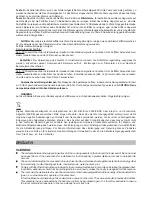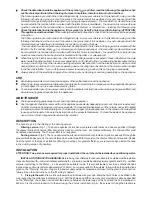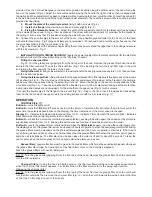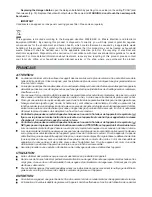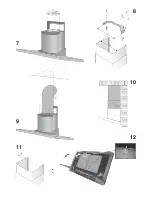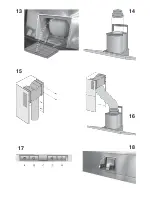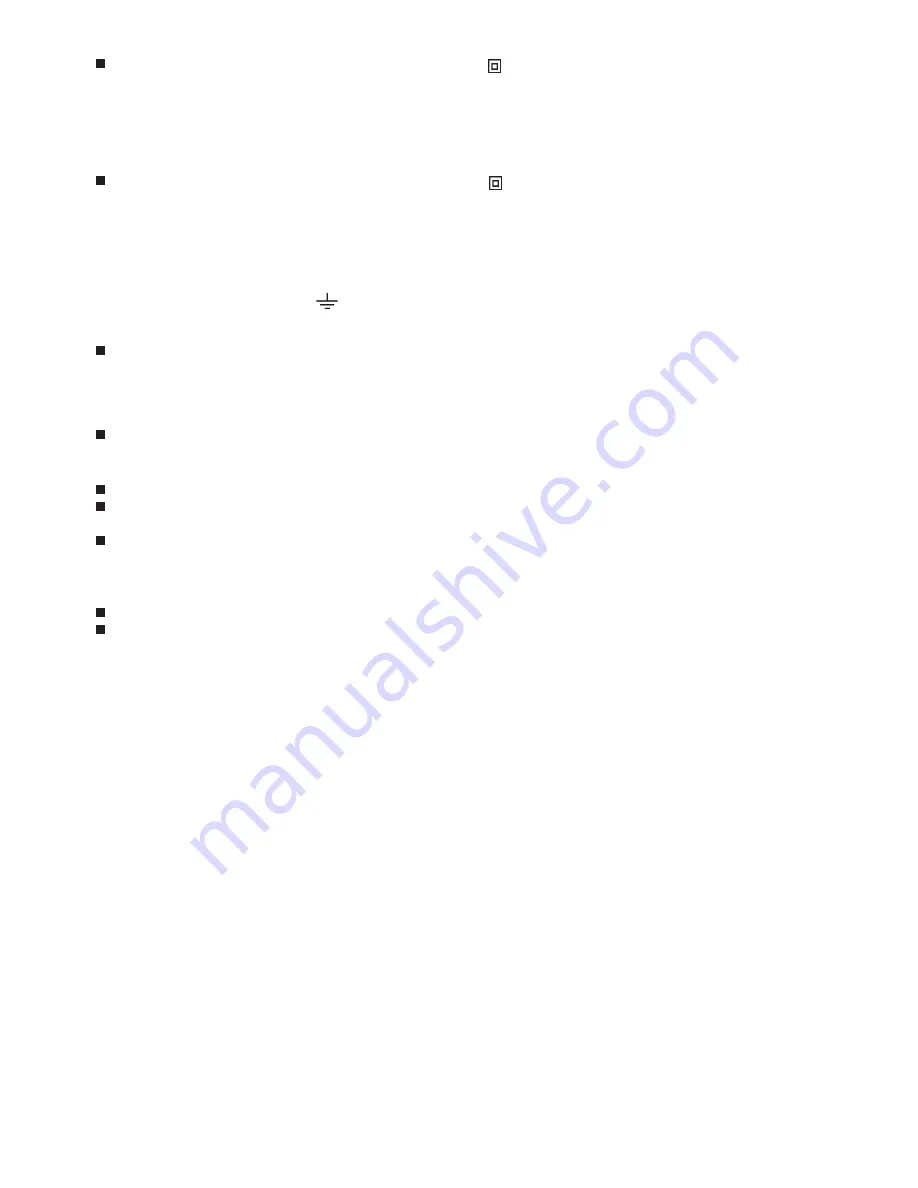
Check the data label inside the appliance; if the symbol ( ) is printed, read the following: this appliance has
such technical particulars that it belongs to class II insulation, therefore it must not be earthed.
The following warning is valid in the United Kingdom only: in case your cable is not furnished with a plug, read the
following instructions; as the colours of the wires in the mains lead of this appliance may not correspond with the
coloured markings identifying the terminals in your plug, proceed as follows: – the wire which is coloured blue must
be connected to the terminal which is marked with the letter N or coloured black; – the wire which is coloured brown
must be connected to the terminal which is marked with the letter L or coloured red. – terminal of a three-pin plug.
Check the data label inside the appliance; if the symbol ( ) is NOT printed, read the following: ATTENTION:
This appliance must be earthed.
When making the electrical connections, check that the current socket has a ground
connection.
The following warning is valid in the United Kingdom only: in case your cable is not furnished with a plug, read the
following instructions; as the colours of the wires in the mains lead of this appliance may not correspond with the
coloured markings identifying the terminals in your plug, proceed as follows:
– the wire which is coloured green and yellow must be connected to the terminal in the plug which is marked with the
letter E or by the earth symbol [
], or coloured green or green and yellow; – the wire which is coloured blue must
be connected to the terminal which is marked with the letter N or coloured black; – the wire which is coloured brown
must be connected to the terminal which is marked with the letter L or coloured red.
When making the electrical connections, check that the voltage values correspond to those indicated on the data
plate inside the appliance itself. In case your appliance is not furnished with a non separating flexible cable and has
no plug, or has not got any other device ensuring omnipolar disconnection from the electricity main, with a contact
opening distance of at least 3 mm, such separating device ensuring disconnection from the main must be included
in the fixed installation. If your unit features a power lead and plug, position this so the plug is accessible.
Always switch off the electricity supply before carrying out any cleaning or servicing operations on the appliance.
USE
Avoid using materials which could cause spurts of flame (flambées) near the appliance.
When frying, take particular care to prevent oil and grease from catching fire. Already used oil is especially dangerous
in this respect. Do not use uncovered electric grates.
To avoid possible risks of fire always comply with the indicated instructions when cleaning anti-grease filters and
when removing grease deposits from the appliance.
MAINTENANCE
Thorough servicing guarantees correct and long-lasting operation.
Any fat deposits should be removed from the appliance periodically depending on amount of use (at least every 2
months). Avoid using abrasive or corrosive products. To clean painted appliances on the outside, use a cloth dipped
in lukewarm water and neutral detergent. To clean steel, copper or brass appliances on the outside, it is always best
to use specific products, following the instructions on the products themselves. To clean the inside of the appliance,
use a cloth (or brush) dipped in denatured ethyl alcohol.
DESCRIPTION
The hood may be in the filtering or the ducting version.
Filtering version
(Fig. 1): The hood aspirates the kitchen air saturated with fumes and odours, purifies it through
the grease filter/s and charcoal filter and returns clean air into the room. For constant efficiency, the charcoal filter must
be replaced periodically. The charcoal filter is not supplied.
Ducting version
(Fig. 2): The hood aspirates the kitchen air saturated with fumes and odours, passes it through the
grease filter/s and expels it to the outside through an outlet pipe. With this version the charcoal filter is not required. Decide
from the outset on the type of installation (filtering or ducting). For greater efficiency, we recommend you install the hood
in the ducting version (if possible).
INSTALLATION
ATTENTION: Two persons are required for proper installation; the unit should be installed by a qualified operator.
INSTALLATION IN DUCTING VERSION
:
Before fixing, the outlet pipe for air evacuation to the outside must be installed.
Use an outlet pipe with: – minimum indispensable length; – minimum possible bends (maximum angle of bend: 90°); – certified
material (according to the State); – an as smooth as possible inside. It is also advisable to avoid any drastic changes
in pipe cross-section (recommended diameter: 150 mm). For air evacuation to the outside, follow all the other instructions
given on the “Warning” chapter. Prepare the power supply within the telescopic chimney (for the electrical connection,
follow all the other instructions on the “Warning” chapter).
1.
Fixing to the wall:
Draw a line on the wall in vertical line with your hob. Mark the first 2 holes to be drilled in the
wall, respecting the distances indicated in Fig. 3. Drill the 2 holes and fit the screw anchors provided. As already specified
on the “Warnings” sheet, bear in mind that the distance between the lower edge of the hood and the hob must be min.
650 mm. Fix the metal bracket (A) to the wall using the 2 holes just drilled (Fig. 4); the screws for fixing the bracket are


